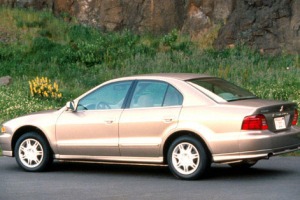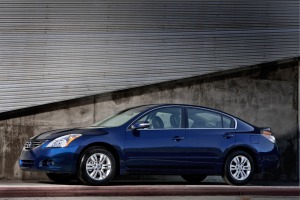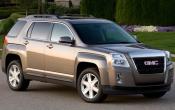
The trade-in process is your Achilles' heel when buying a new car. While you are being dazzled by new car dreams, your trade-in disappears amid a flurry of juggled figures and double talk. But with a little knowledge and preparation, you can at least get the going price for old faithful. Here are our top 10 tips for making the most of your old car:
- Consider selling your trade-in yourself. Look at the difference between used car True Market Value prices for private parties and trade-ins. A car worth $14,400 to a private party would only bring $13,250 as a trade-in — a $1,150 difference.
- Appraise your trade-in. Many people wind up negotiating for a new car without first checking to see what their trade-in is worth. This puts you in a weak position since you have no idea what a reasonable offer is for your trade-in. Check our True Market Value trade-in values, print out the page and take it with you to the dealer. Another option would be to take your vehicle to CarMax for an appraisal. When you bring in your vehicle, they will give it a detailed inspection and provide you with a written appraisal good for up to seven days. You can then go to other dealerships and try to get a better deal. In our experience, we've found that CarMax offers more for your trade in than a conventional dealer. Also, you aren't obligated to purchase your next car there.
- Give your trade-in curb appeal. Do yourself a favor and spruce up the old beater before you go to the dealer. This means shoveling out all the fast food wrappers from the backseat, emptying the ash trays and giving it a good wash. If you have kept maintenance records for the car (and you should have) bring these along with you. Let them know the car was loved and pampered. It will help you push for your full value.
- Know the score. While the salesman might feign disinterest in your trade-in, it's actually a high source of profit for a dealership. Consider this: a consumer might be offered $3,700 for a trade-in that will be sold for $7,400. That's $3,700 of profit. A new car is likely to net the dealer as little as a $500 profit. Also, take a global approach. The dealer will look at all the pieces of your deal as a whole — trade-in, new car, financing and aftermarket sales. You should approach trading in the same way. This means that if you insist on an unrealistically high figure for your trade-in, they will try to take profit back somewhere else.
- Use the Internet department. If you shop for a new car through the Internet department, you will save money on your new car purchase. This will offset the inherent loss from the trade-in process. Begin your interaction with the Internet managers by sending in a quote through Edmunds.com's dealer locator.
- Shop your trade-in. You won't get the same price for your trade-in from every car lot. If you are trading in a white Camry and the lot you are at already has five Camrys, they won't give you top dollar for your car. Tell the salesman up front that you will want full credit for your trade-in and want a figure before you begin negotiations on the new car.
- Compartmentalize the deal. Keep negotiations for the new car and used car separate. You should get a solid figure for your trade-in from the used car manager. This "actual cash value" amount should be written in the contract as a credit against the purchase price of the car. Don't let the salesman tell you that they "took care of you" somewhere else in the deal.
- Work the tax advantage. In most states, you only pay sales tax on the difference between the new car and the trade-in. This means that, on top of what you receive for your trade-in, you are paying less sales tax. This is a net savings for you and could make you decide that trading in is worth it.
- Enjoy the convenience. One of the advantages of trading in the old beast is that you can get all your car-buying hassles solved at once. This means you don't have to schlep to the registry and wait in line for hours. What's your time worth? Maybe you should consider trading in.
- Be realistic. If you have been to three or more car lots, and keep getting about the same figure for your trade-in, then you have found the market value of the trade-in in your area. You've done the best you can. Bite the bullet and take the loss. And remember tip No. 9.
If you follow these recommendations you can make the trade-in process work for you. Just remember, the key is to know the market, shop around and be realistic. If you do these things, you will not only save money but also have the peace of mind knowing you maximized your money.








